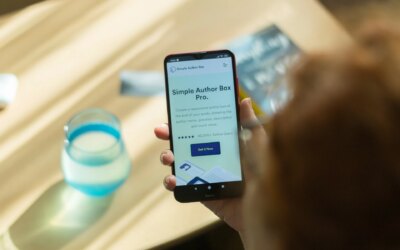Building a website that converts visitors into customers is very important. A high-converting website helps you achieve your goals, whether it’s selling products, getting sign-ups, or sharing information. However, creating such a website takes careful planning and the right strategies.
The first step in making a high-converting website is understanding your audience. Knowing who visits your site helps you tailor your content and design to meet their needs. When your website feels personalized, visitors are more likely to take action.
Next, optimizing your website design is key. A clean, user-friendly design makes it easy for visitors to navigate and find what they’re looking for. Good website design also builds trust and keeps visitors on your site longer.
Crafting compelling content is another crucial element. Engaging, relevant content keeps visitors interested and encourages them to explore more. It also helps communicate your value proposition clearly, making visitors more likely to convert.
Finally, effective call-to-actions (CTAs) motivate visitors to take the next step. Whether it’s signing up for a newsletter, buying a product, or contacting you, clear and compelling CTAs guide visitors toward conversion.
By focusing on understanding your audience, optimizing design, crafting great content, and using effective CTAs, you can build a website that not only attracts visitors but also converts them into loyal customers.
Understand Your Audience
Understanding your audience is the first step to building a high-converting website. You need to know who they are, what they like, and what they need. This helps you create a website that appeals to them and meets their expectations.
Start by creating audience personas. These are detailed descriptions of your ideal visitors. Include information like age, job, interests, and problems they face. This helps you picture who you are talking to and what will attract them.
Next, use tools like Google Analytics to gather data about your visitors. Look at metrics such as age, location, and the devices they use. This data provides insights into who is coming to your site and how they interact with it. You can also use surveys and feedback forms on your website to get direct input from your visitors. Ask them what they like, what they don’t like, and what they want to see more of.
When you understand your audience well, you can tailor your website’s design, content, and features to suit them. This increases the chances that they will engage with your site and take the actions you want, like making a purchase or signing up for a newsletter.
Optimize Your Website Design
Optimizing your website design is crucial for keeping visitors interested and encouraging them to take action. A clean, user-friendly design makes it easy for visitors to find what they need and makes your website look professional.
Start with a simple and clean layout. Avoid clutter and make sure every element has a purpose. Use plenty of white space to make the content stand out and ensure that important elements, like buttons and images, are easy to see. Your design should guide the visitor’s eye to the most important parts of your site.
Make sure your website is mobile-friendly. Many people browse the web on their phones, so your site should look and work well on all devices. Use a responsive design that adapts to different screen sizes, so visitors have a seamless experience whether they are on a desktop, tablet, or smartphone.
Speed is also important. A slow website can frustrate visitors and cause them to leave. Optimize images, use a good hosting service, and minimize the use of heavy scripts to ensure your site loads quickly. Check your site’s speed regularly and make improvements as needed.
Lastly, use clear and consistent navigation. Your menu should be easy to find and simple to use. Visitors should be able to move between pages without getting lost. Use straightforward language for menu items and keep the structure logical.
By optimizing your website design, you create a better experience for your visitors. This keeps them on your site longer, increases their trust, and improves the chances that they will convert into customers.
Craft Compelling Content
Crafting compelling content is key to engaging your visitors and encouraging them to take action. Your content should be informative, interesting, and relevant to your audience. This helps build trust and keeps visitors coming back.
Start with a strong headline. A catchy headline grabs attention and makes visitors want to read more. Use simple and direct language to tell visitors what the content is about. Make sure it addresses a need or problem they have.
Use clear and concise language in your content. Avoid jargon and long-winded explanations. Break up text with headings, bullet points, and short paragraphs. This makes the content easier to read and digest.
Include visual content like images, videos, and infographics. Visuals make your content more engaging and can help explain complex ideas. Be sure to use high-quality images and keep videos short and to the point.
Make your content actionable. Provide clear steps or tips that visitors can follow. This adds value and shows that you are an expert in your field. Use a friendly tone to connect with your audience and make the content enjoyable to read.
Lastly, use keywords naturally throughout your content to improve SEO. This helps your website rank higher in search engine results, making it easier for people to find you.
Implement Effective Call-to-Actions
Call-to-actions (CTAs) are important for guiding visitors toward taking the next step. Whether it’s signing up for a newsletter, making a purchase, or contacting you, effective CTAs can significantly boost your conversions.
Place CTAs strategically on your website. They should be easy to find but not overwhelming. Include them on important pages like the homepage, product pages, and blog posts. Use contrasting colors to make CTAs stand out from the rest of the content.
Use clear and compelling language in your CTAs. Phrases like “Sign Up Now,” “Get Started,” or “Contact Us Today” create a sense of urgency and clearly outline what you want the visitor to do. Make sure the CTA tells visitors exactly what they will get by taking action.
Ensure your CTA buttons are easy to click on all devices. Make them large enough for mobile users so that they don’t miss out on conversions due to usability issues. Consider using A/B testing to see which CTAs perform best and make adjustments based on the results.
Include social proof near your CTAs to build trust. Testimonials, reviews, or case studies can reassure visitors that they are making the right choice. This can increase the likelihood of them following through with the desired action.
By placing your CTAs thoughtfully and using persuasive language, you guide your visitors toward actions that drive conversions.
Conclusion
Building a high-converting website involves several key elements working together seamlessly. Understanding your audience ensures that your content and design meet their needs and expectations. Optimizing your website design enhances the user experience, making it easy for visitors to navigate and find what they need. Crafting compelling content keeps visitors engaged and adds value, while effective call-to-actions guide them towards taking important steps.
Each of these components plays a vital role in turning visitors into customers. By focusing on these areas, you create a powerful and effective website that supports your goals and drives success. Remember, the ultimate goal is to make it as easy as possible for your visitors to understand your message and take action.
Is your website ready to boost its conversion rates? Contact Eight Hats today to learn how our exceptional website development in Lafayette, hosting, and support services can help you build a high-converting website that meets all your needs!




